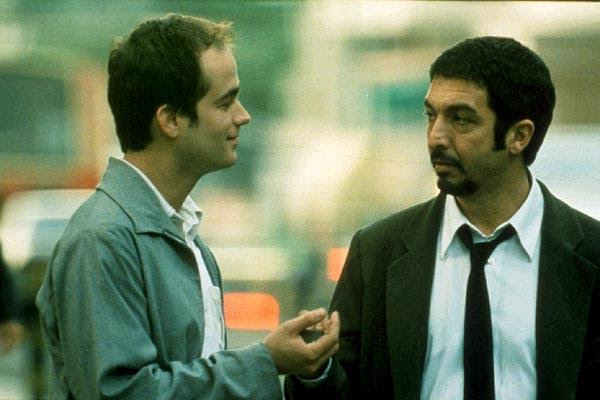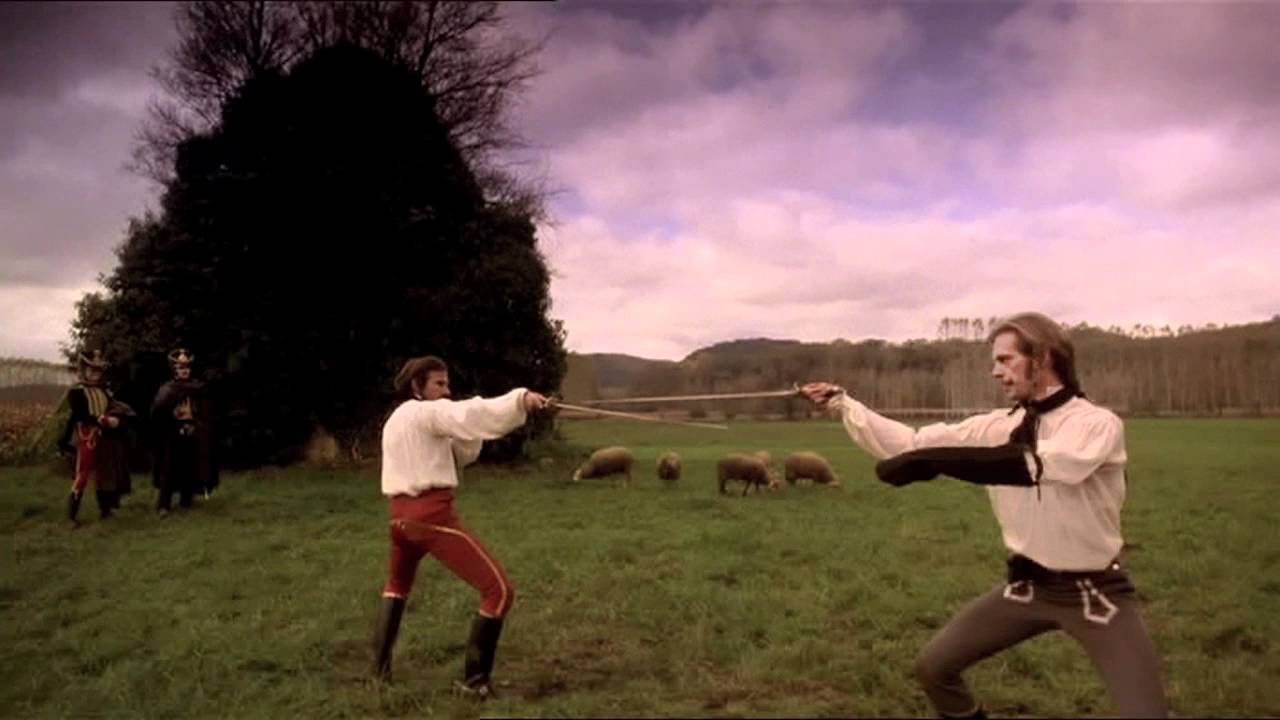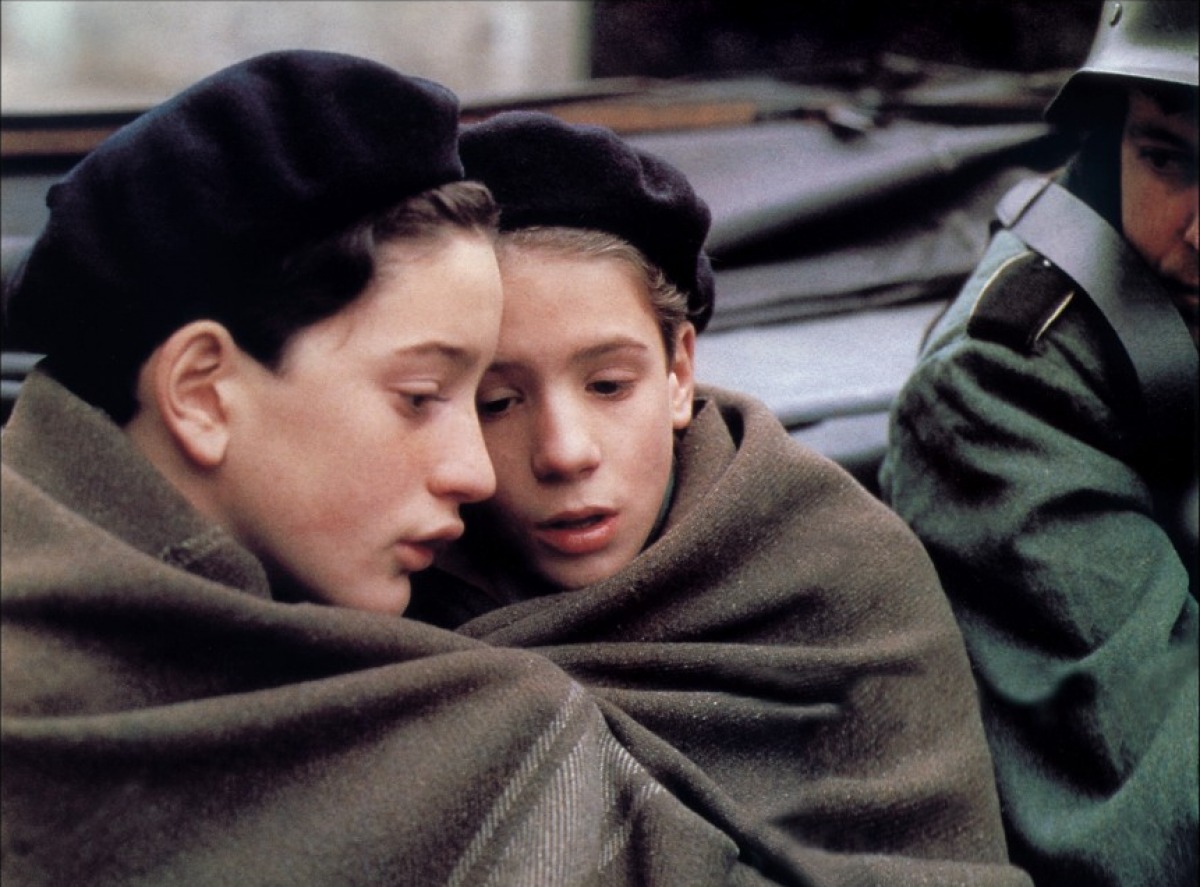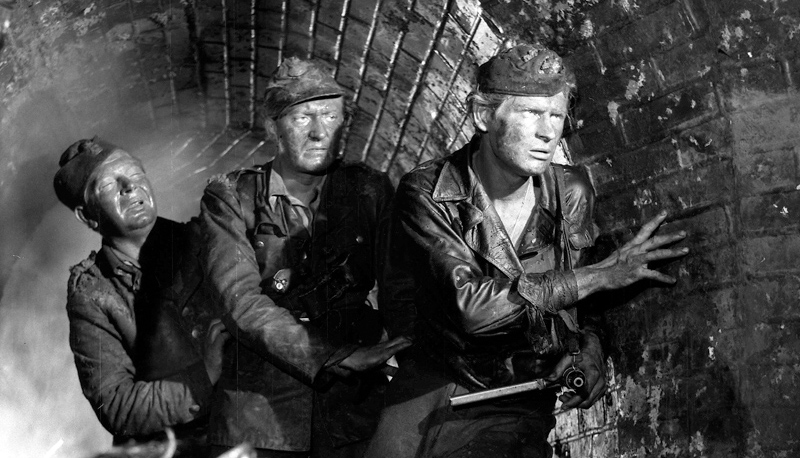6. Nine Queens (2000, Fabian Bielinsky)

An extremely fast and clever thriller.
Two small-time con artists in the late 1990’s Buenos Aires team up for a day – seemingly by accident – to perform the “job” of their lives: to sell forged early 20th century Weimar Republic stamps to a Spanish multi-millionaire collector.
The endless avalanche of spectacular twists occurs for one hour and 45 minutes would make Charlie Kaufman steal the script from the Argentinian screenwriter Fabian Bielinski’s table at Starbucks.
Juan, a melancholic and a somewhat reluctant con artist with a desperate need for a large amount of cash, requested to bribe the judge who will decide the fate of his father (who is already depressed in jail). Juan, played by Gaston Pauls, seemingly can’t believe his luck when his partner, the alpha con artist Marcos (played inevitably by Ricardo Darin) with an ego larger than Avenida Corrientes, is presented with the opportunity to leave behind the pitiful amounts he extracts from gullible widows and go for an unprecedented $450K in a few hours.
Usually, clever and fast-paced thrillers steal the show with slick dramaturgy and spectacular sleights of hand, while the characterization is relegated to second place. Not the case with “9 Queens,” which exhibits slick dialogues and abundant Buenos Aires streetwise wit.
Aside from winning a vast majority of Argentinian National Film Awards (“Best Film,” “Best Director,” “Best Supporting Role” and certainly “Best Script”) in 2000, “Nine Queens” impressed George Clooney and Steven Soderbergh, to the point of acquiring the rights for a remake (“Criminal” in 2004).
7. The Duellists (1977, Ridley Scott)

Ridley Scott’s utterly impressive feature debut follows the near-pathological obsession of revenge of Ferraud (played by Harvey Keitel), an officer in Napoleon’s army.
The reason for such an obstinately pursuing of vendetta is a minor (apparent) insult coming from a fellow officer at a social event. Ferraud seems to be a lower-class soldier promoted after the French Revolution, based on merit and hard work. Although not explicitly conveyed in the film, D’Hubert, Ferraud’s nemesis, seems to be part of an adjustable, not ideologically minded aristocratic class that wasn’t eradicated during the Reign of Terror, nor did it cross over to the counter-revolutionaries.
The first duel ends with D’Hubert dominating the last part of the confrontation and pushing Ferraud to the floor. That on top of the already highly suspicious and impulsive nature of the protagonist catapults the initial animosity into full-blown paroxistic obsession.
The film was made in 1977 with an extremely low budget: $900K. Although many credible critics and scores of fans consider the film a flat masterpiece with superb cinematography, masterful framing, and characters with incredibly rich humanity, the film never even made the money back from its 1977 theatrical distribution. Scott’s mise en scene for the scene of the duel places the audience in a visceral situation involving adrenaline, uncertainty concerning the outcome, and ultimately palpable anguish concerning the possibility of death.
8. Au revoir les enfants (1987, Louis Malle)

From the Golden Lion at the Venice Film Festival to seven Cesar Awards and an Oscar nomination, “Au revoir les enfants” probably represents Louis Malle’s most memorable film in an already prestigious (yet somewhat erratic) career.
The year 1944: a private all-boys boarding school for the kids of the high bourgeoisie in occupied France. Jullien, 12 years old, on the cusp between childhood and adolescence, is a more subtle alter ego of director Malle.
Julien misses his mother desperately and the cold winter light through the bars of the restrictive boarding school in rural France captures the melancholic nature of the character. The mother – quite judiciously – prefers her son to stay away from any potential trouble in occupied Paris.
A new classmate named Jean Bonnet, who is shy, intelligent and with a big secret, is gently introduced by the priests. After the inevitable teasing and some light verbal abuse including some legit questioning of Jean’s lack of a Marseille accent, Julien and Jean form a profound bond of friendship.
Julien admires Jean for his piano playing talent as well for some fairly advanced literary insights. A rumor runs through the school that three of the kids are Jewish. The Gestapo raid at the school triggers a heart-wrenching drama – and it’s a completely true story with the names of the real characters just slightly changed. A slight giveaway gesture from Julien involuntarily leads the Gestapo to Jean, and along with the other two Jewish kids and Father Jean, they are all taken away and sent to a concentration camp. As per Malle’s personal statements, he could never forget that fateful day in January.
9. Kanal (1957, Andrej Wajda)

The winner of the Special Jury Award in Cannes in 1957, “Kanal” is an amazing masterpiece capturing the real-life stories of a group of Polish Resistance members trying to outwit and survive the German encirclement in September 1944 during the Polish insurrection. The film has 2 parts. The first one occurs in a house of Warsaw during the German bombardments.
Director Andrew Wajda has an impressive flair for capturing a profoundly human and realistic portrait of Resistance fighters. Their behavior, actions, and dialogue breathe and exhibit a mix of guts, discouragement, self-irony, and fatalism. The characters don’t discuss ideology. They are simply attached to life as they sing, crack jokes, and hope to escape the German encirclement. That itself is amazing at that time, only four years after Stalin’s death in a country behind the Iron Curtain, where the vast majority of produced films had to pass brutal and kafkaesque censorship rules.
“Kanal” is almost miraculously disconnected from the socialist realism mandatory official aesthetics. The second part occurs in the labyrinth of the Warsaw sewerage system, which is naturalistic, suffocating, and in the meantime, a surreal Dante’s Inferno. Michael, the artist, actually quotes Dante before reaching his breaking point in such a filthy and claustrophobic environment.
Surprisingly, certain Wajda’s fast “push-ins” on the characters’ close-ups at crucial moments of raising emotion or anguish are extremely similar from Scorsese’s mise en scene techniques in “Goodfellas,” “Casino” and “Cape Fear.” Although Andrew Wajda’s “Ashes and Diamonds” is remembered and considered a classic masterpiece of Polish cinema, “Kanal,” with its haunting black and white and extremely honest depiction of Polish Resistance, is outrageously bypassed by most critics.
10. Loves of a Blonde (1965, Milos Forman)

Women from a factory in rural Czechoslovakia are completely deprived of male company as local men are circumscript from what appears to be “an almost certain war” with the West.
After the factory manager’s intervention with some army generals, a group of reservists arrives in town but to the women’s bitter disappointment, these guys are well into their 40s and mostly married. Andula, the local blonde, circumnavigates the scarcity of potential romantic partners by spotting the younger piano player, and after feigning reluctance while actually believing every single word, she ends up spending the night with the seductive artist.
Confusing the one night stand with real love, Andula appears a week later at the pianist’s parents’ house with a suitcase in what is a bittersweet and awkwardly ironic scene in the film. The Prague-based parents of the pianist see Andula as a well-meaning but naive country girl, unworthy of their much more sophisticated son.
A brilliant look at youth culture and sex relations behind the Iron Curtain, this gentle satire by Milos Forman was nominated for the 1966 Academy Award for Best Foreign Language Film.There is no traditional plot progress in this brilliant Czechoslovak New Wave film, but rather a mordant wit and criticism of communist society aside from the seemingly bland observational documentary techniques.
As opposed to the iconic pop Western culture featuring the pulsating high energy hits of the Beatles and the Rolling Stones in the mid-1960s, the Czeck ballrooms in the film offer traditionalist 19th-century polka or at the most, some mellow 1950’s jazz. Also, the cynical communist management doesn’t even bother to generate propaganda, alluding to a better life as they consider the working class to be completely ignorant and subdued.